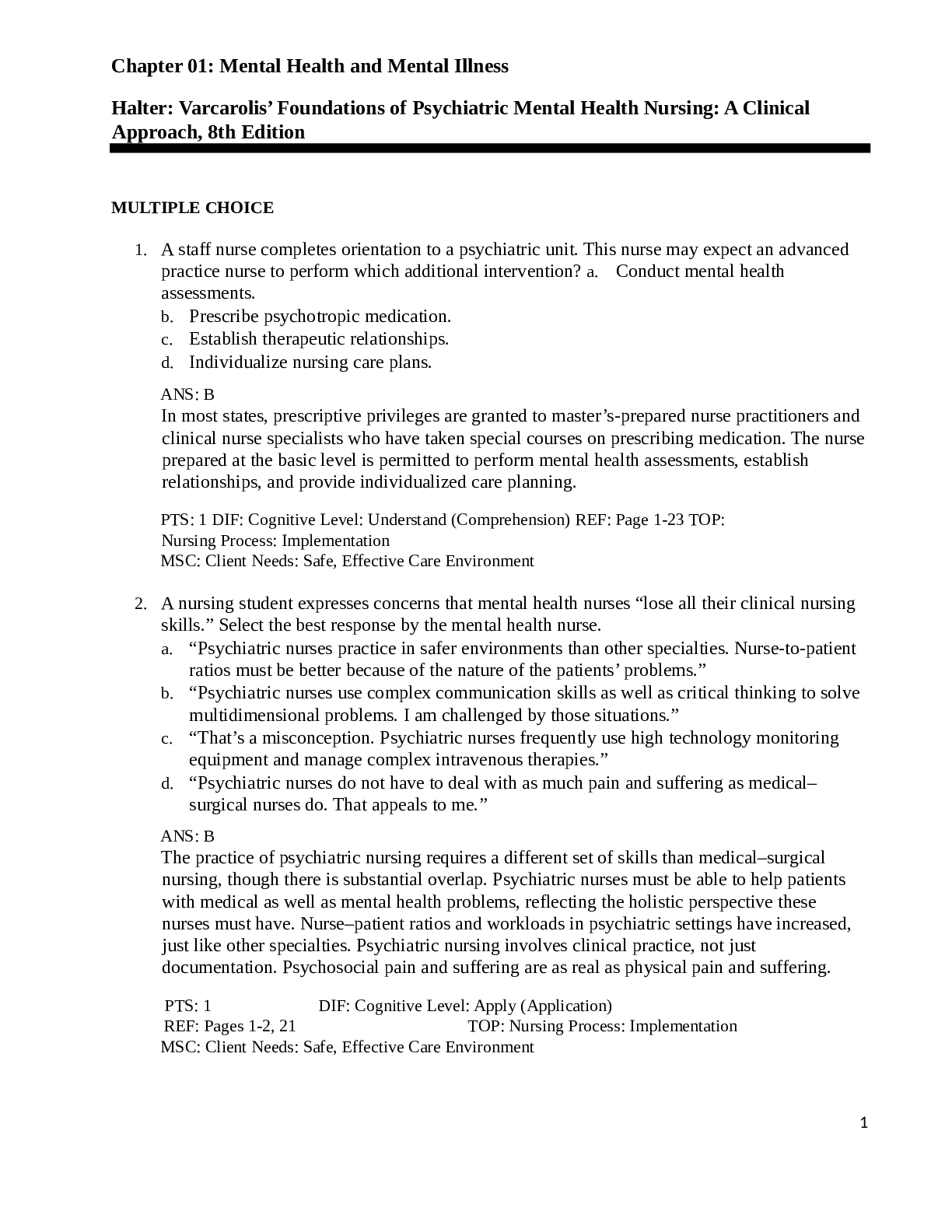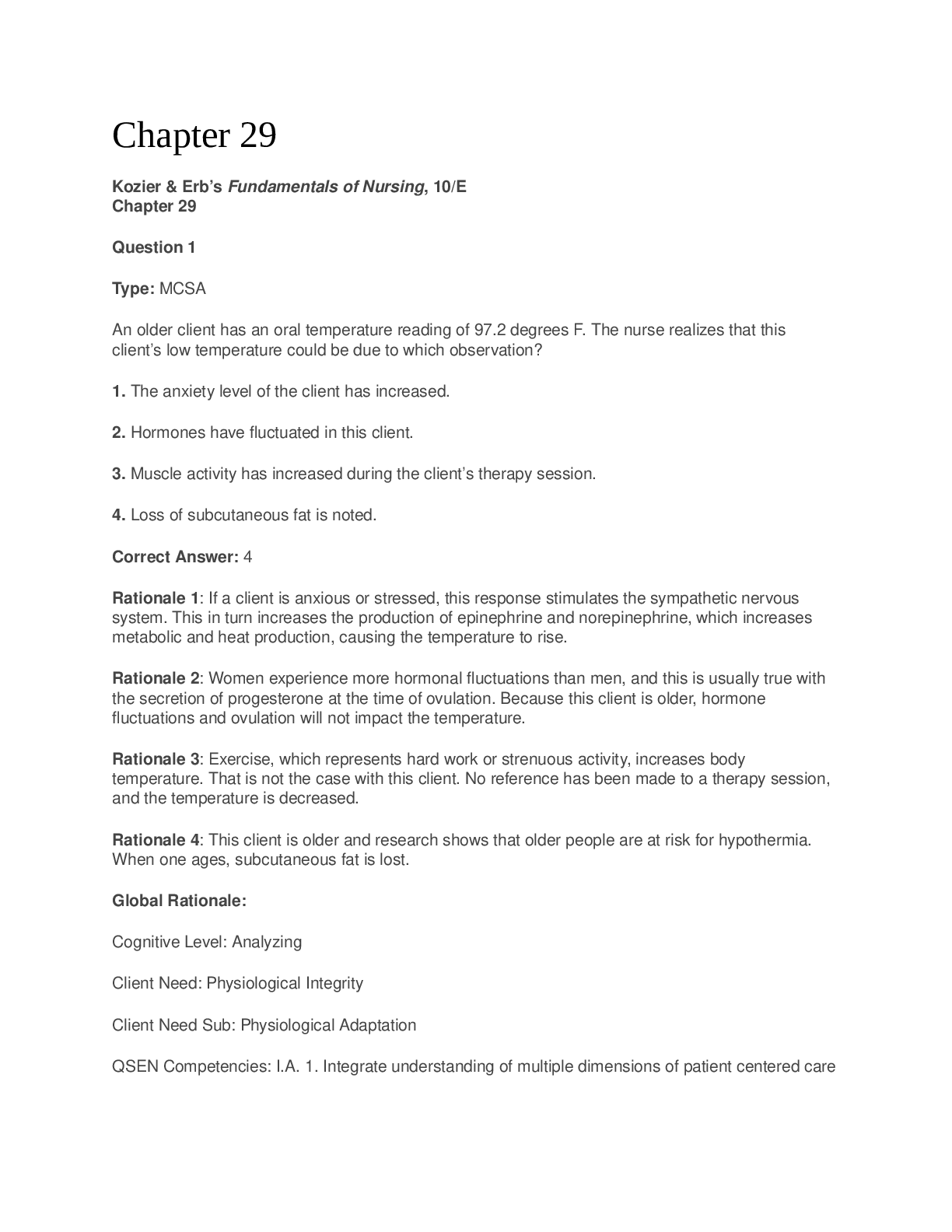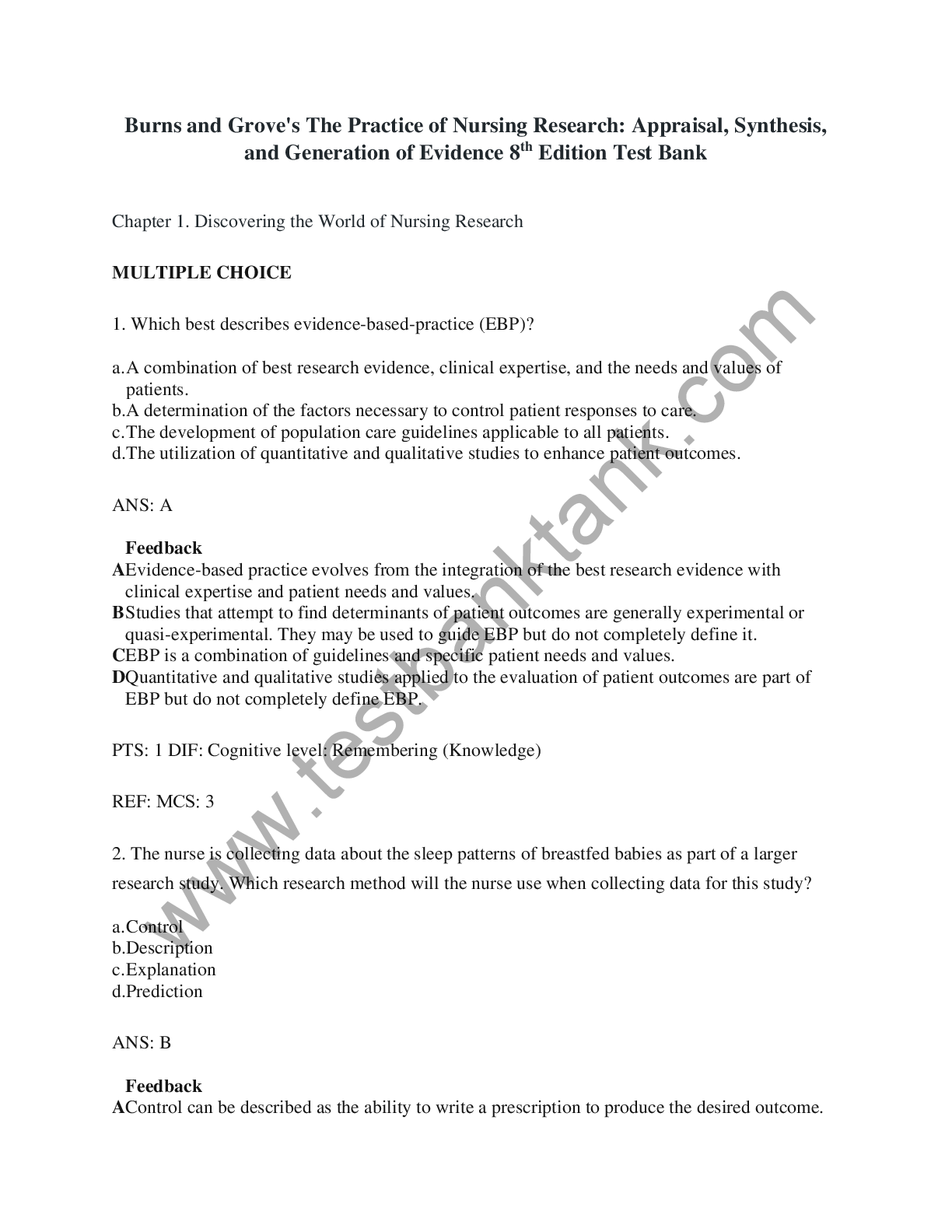Financial Accounting > TEST BANKS > Introduction To Managerial Accounting 7th Edition Test Bank by Peter Brewer, Ray Garrison, Eric Nore (All)
Introduction To Managerial Accounting 7th Edition Test Bank by Peter Brewer, Ray Garrison, Eric Noreen
Document Content and Description Below
Chapter 01 Managerial Accounting and Cost Concepts True / False Questions 1. Selling costs can be either direct or indirect costs. True False 2. A direct cost is a cost that cannot be easily trac... ed to the particular cost object under consideration. True False Introduction To Managerial Accounting 7th Edition Test Bank by Peter Brewer, Ray Garrison, Eric Noreen 1-4 3. Property taxes and insurance premiums paid on a factory building are examples of period costs. True False 4. Conversion cost equals product cost less direct labor cost. True False 5. Thread that is used in the production of mattresses is an indirect material that is therefore classified as manufacturing overhead. True False 6. Direct labor is a part of prime cost, but not conversion cost. True False 7. Conversion cost is the sum of direct labor cost and direct materials cost. True False 8. Direct material costs are generally fixed costs. True False 9. Product costs are recorded as expenses in the period in which the related products are sold. True False 10. Depreciation on manufacturing equipment is a product cost. True False 11. Manufacturing salaries and wages incurred in the factory are period costs. True False Introduction To Managerial Accounting 7th Edition Test Bank by Peter Brewer, Ray Garrison, Eric Noreen 1-5 12. Depreciation on office equipment would be included in product costs. True False 13. Rent on a factory building used in the production process would be classified as a product cost and as a fixed cost. True False 14. A fixed cost remains constant if expressed on a unit basis. True False 15. Total variable cost is expected to remain unchanged as activity changes within the relevant range. True False 16. Country Charm Restaurant is open 24 hours a day and always has a fire going in the fireplace in the middle of its dining area. The cost of the firewood for this fire is fixed with respect to the number of meals served at the restaurant. True False 17. Committed fixed costs represent organizational investments with a multi-year planning horizon that can't be significantly reduced even for short periods. True False 18. Commissions paid to salespersons are a variable selling expense. True False Introduction To Managerial Accounting 7th Edition Test Bank by Peter Brewer, Ray Garrison, Eric Noreen 1-6 19. Variable costs are costs that vary, in total, in direct proportion to changes in the volume or level of activity. True False 20. The planning horizon for a committed fixed cost usually encompasses many years. True False 21. Cost behavior is considered linear whenever a straight line is a reasonable approximation for the relation between cost and activity. True False 22. The high-low method uses cost and activity data from just two periods to establish the formula for a mixed cost. True False 23. The engineering approach to the analysis of mixed costs involves a detailed analysis of what cost behavior should be, based on an industrial engineer's evaluation of the production methods to be used, the materials specifications, labor requirements, equipment usage, production efficiency, power consumption, and so on. True False 24. The contribution margin is the amount remaining from sales revenues after variable expenses have been deducted. True False 25. A contribution format income statement for a merchandising company organizes costs into two categories—cost of goods sold and selling and administrative expenses. True False Introduction To Managerial Accounting 7th Edition Test Bank by Peter Brewer, Ray Garrison, Eric Noreen 1-7 26. The traditional format income statement provides managers with an income statement that clearly distinguishes between fixed and variable costs and therefore aids planning, control, and decision making. True False 27. In a contribution format income statement, the gross margin minus selling and administrative expenses equals net operating income. True False 28. A traditional format income statement organizes costs on the basis of behavior. True False 29. In a traditional format income statement for a merchandising company, the selling and administrative expenses report all period costs that have been expensed as incurred. True False 30. The contribution format is widely used for preparing external financial statements. True False 31. Contribution margin equals revenue minus all fixed costs. True False 32. The potential benefit that is given up when one alternative is selected over another is called an opportunity cost. True False 33. A cost that differs from one month to another is known as a differential cost. True False Introduction To Managerial Accounting 7th Edition Test Bank by Peter Brewer, Ray Garrison, Eric Noreen 1-8 Multiple Choice Questions 34. The nursing station on the fourth floor of Central Hospital is responsible for the care of orthopedic surgery patients. The costs of prescription drugs administered by the nursing station to patients should be classified as: A. direct patient costs. B. indirect patient costs. C. overhead costs of the nursing station. D. period costs of the hospital. 35. All of the following costs would be found in a company's accounting records except: A. sunk cost. B. opportunity cost. C. indirect costs. D. direct costs. 36. The costs of the Accounting Department at Central Hospital would be considered by the Surgery Department to be: A. direct costs. B. indirect costs. C. incremental costs. D. opportunity costs. Introduction To Managerial Accounting 7th Edition Test Bank by Peter Brewer, Ray Garrison, Eric Noreen 1-9 37. Which of the following is classified as a direct labor cost? Wages of assemblyline workers Wages of a factory supervisor A) No No B) Yes Yes C) No Yes D) Yes No A. Option A B. Option B C. Option C D. Option D 38. In a manufacturing company, direct labor costs combined with direct materials costs are known as: A. period costs. B. conversion costs. C. prime costs. D. opportunity costs. Introduction To Managerial Accounting 7th Edition Test Bank by Peter Brewer, Ray Garrison, Eric Noreen 1-10 39. The property taxes on a factory building would be an example of: Prime Cost Conversion Cost A) No Yes B) Yes No C) Yes Yes D) No No A. Option A B. Option B C. Option C D. Option D 40. Which of the following would most likely be included as part of manufacturing overhead in the production of a wooden table? A. The amount paid to the individual who stains the table. B. The commission paid to the salesperson who sold the table. C. The cost of glue used in the table. D. The cost of the wood used in the table. Introduction To Managerial Accounting 7th Edition Test Bank by Peter Brewer, Ray Garrison, Eric Noreen 1-11 41. Property taxes on a manufacturing facility are classified as: Conversion cost Period cost A) Yes No B) Yes Yes C) No Yes D) No No A. Option A B. Option B C. Option C D. Option D 42. Indirect labor is a(n): A. Prime cost. B. Conversion cost. C. Period cost. D. Opportunity cost. Introduction To Managerial Accounting 7th Edition Test Bank by Peter Brewer, Ray Garrison, Eric Noreen 1-12 43. The salary paid to the maintenance supervisor in a manufacturing plant is an example of: Product Cost Manufacturing Overhead A) No Yes B) Yes No C) Yes Yes D) No No A. Option A B. Option B C. Option C D. Option D 44. All of the following would be classified as product costs except: A. property taxes on production equipment. B. insurance on factory machinery. C. salaries of the marketing staff. D. wages of machine operators. Introduction To Managerial Accounting 7th Edition Test Bank by Peter Brewer, Ray Garrison, Eric Noreen 1-13 45. The cost of direct materials cost is classified as a: Period cost Product cost A) Yes Yes B) No No C) Yes No D) No Yes A. Option A B. Option B C. Option C D. Option D 46. Which of the following costs is classified as a prime cost? Direct materials Indirect materials A) Yes Yes B) No No C) Yes No D) No Yes A. Option A B. Option B C. Option C D. Option D Introduction To Managerial Accounting 7th Edition Test Bank by Peter Brewer, Ray Garrison, Eric Noreen 1-14 47. Inventoriable costs are also known as: A. variable costs. B. conversion costs. C. product costs. D. fixed costs. 48. Fresh Wreath Corporation manufactures wreaths according to customer specifications and ships them to customers using United Parcel Service (UPS). Which two terms below describe the cost of shipping these wreaths? A. variable cost and product cost B. variable cost and period cost C. fixed cost and product cost D. fixed cost and period cost 49. If the level of activity increases within the relevant range: A. variable cost per unit and total fixed costs also increase. B. fixed cost per unit and total variable cost also increase. C. total cost will increase and fixed cost per unit will decrease. D. variable cost per unit and total cost also increase. 50. Within the relevant range: A. variable cost per unit decreases as production decreases. B. fixed cost per unit increases as production decreases. C. fixed cost per unit decreases as production decreases. D. variable cost per unit increases as production decreases. Introduction To Managerial Accounting 7th Edition Test Bank by Peter Brewer, Ray Garrison, Eric Noreen 1-15 51. Discretionary fixed costs: A. have a planning horizon that covers many years. B. may be reduced for short periods of time with minimal damage to the long-run goals of the organization. C. cannot be reduced for even short periods of time without making fundamental changes. D. are most effectively controlled through the effective utilization of facilities and organization. 52. When the activity level declines within the relevant range, what should happen with respect to the following? Fixed cost per unit Variable cost per unit A) No change Increase B) Increase Increase C) Increase No change D) No change No change A. Option A B. Option B C. Option C D. Option D 53. Stott Company requires one full-time dock hand for every 500 packages loaded daily. The wages for these dock hands would be: A. variable. B. mixed. C. step-variable. D. curvilinear. Introduction To Managerial Accounting 7th Edition Test Bank by Peter Brewer, Ray Garrison, Eric Noreen 1-16 54. When the level of activity decreases, variable costs will: A. increase per unit. B. increase in total. C. decrease in total. D. decrease per unit. Introduction To Managerial Accounting 7th Edition Test Bank by Peter Brewer, Ray Garrison, Eric Noreen 1-17 55. Data for Cost A and Cost B appear below: Units Produced Cost Per Unit Total Cost Cost A 1 ? $10 10 ? $100 100 ? $1,000 1,000 ? $10,000 Cost B 1 $5,000 ? 10 $500 ? 100 $50 ? 1,000 $5 ? Which of the above best describes the behavior of Costs A and B? A. Cost A is fixed, Cost B is variable. B. Cost A is variable, Cost B is fixed. C. Both Cost A and Cost B are variable. D. Both Cost A and Cost B are fixed. Introduction To Managerial Accounting 7th Edition Test Bank by Peter Brewer, Ray Garrison, Eric Noreen 1-18 56. Which of the following companies would have the highest proportion of variable costs in its cost structure? A. Public utility. B. Airline. C. Fast food outlet. D. Architectural firm. 57. An example of a discretionary fixed cost would be: A. taxes on the factory. B. depreciation on manufacturing equipment. C. insurance. D. research and development. 58. For planning, control, and decision-making purposes: A. fixed costs should be converted to a per unit basis. B. discretionary fixed costs should be eliminated. C. variable costs should be ignored. D. mixed costs should be separated into their variable and fixed components. 59. Which of the following costs, if expressed on a per unit basis, would be expected to decrease as the level of production and sales increases? A. Sales commissions. B. Fixed manufacturing overhead. C. Variable manufacturing overhead. D. Direct materials. Introduction To Managerial Accounting 7th Edition Test Bank by Peter Brewer, Ray Garrison, Eric Noreen 1-19 60. In describing the cost equation, Y = a + bX, "a" is: A. the dependent variable cost. B. the independent variable the level of activity. C. the total fixed cost. D. the variable cost per unit of activity. 61. Which of the following is an example of a cost that is variable with respect to the number of units produced? A. Rent on the administrative office building. B. Rent on the factory building. C. Direct labor cost, where the direct labor workforce is adjusted to the actual production of the period. D. Salaries of top marketing executives. 62. Contribution margin means: A. what remains from total sales after deducting fixed expenses. B. what remains from total sales after deducting cost of goods sold. C. the sum of cost of goods sold and variable expenses. D. what remains from total sales after deducting all variable expenses. 63. The is the amount remaining from sales revenue after all variable expenses have been deducted. A. cost structure B. gross margin C. contribution margin D. committed fixed cost Introduction To Managerial Accounting 7th Edition Test Bank by Peter Brewer, Ray Garrison, Eric Noreen 1-20 64. A sunk cost is: A. a cost which may be saved by not adopting an alternative. B. a cost which may be shifted to the future with little or no effect on current operations. C. a cost which cannot be avoided because it has already been incurred. D. a cost which does not entail any dollar outlay but which is relevant to the decision-making process. 65. The cost of factory machinery purchased last year is: A. an opportunity cost. B. a differential cost. C. a direct materials cost. D. a sunk cost. 66. Abbott Company's manufacturing overhead is 20% of its total conversion costs. If direct labor is $38,000 and if direct materials are $23,000, the manufacturing overhead is: A. $9,500 B. $152,000 C. $5,750 D. $15,250 67. During the month of April, direct labor cost totaled $15,000 and direct labor cost was 30% of prime cost. If total manufacturing costs during April were $79,000, the manufacturing overhead was: A. $35,000 B. $29,000 C. $50,000 D. $129,000 Introduction To Managerial Accounting 7th Edition Test Bank by Peter Brewer, Ray Garrison, Eric Noreen 1-21 68. In April direct labor was 70% of conversion cost. If the manufacturing overhead for the month was $42,000 and the direct materials cost was $28,000, the direct labor cost was: A. $98,000 B. $65,333 C. $18,000 D. $12,000 69. A manufacturing company prepays its insurance coverage for a three-year period. The premium for the three years is $2,400 and is paid at the beginning of the first year. Seventy percent of the premium applies to manufacturing operations and thirty percent applies to selling and administrative activities. What amounts should be considered product and period costs respectively for the first year of coverage? Product Period A) $800 $0 B) $0 $800 C) $560 $240 D) $240 $560 A. Option A B. Option B C. Option C D. Option D [Show More]
Last updated: 2 years ago
Preview 1 out of 347 pages
 (1).png)
Buy this document to get the full access instantly
Instant Download Access after purchase
Buy NowInstant download
We Accept:

Reviews( 0 )
$17.00
Can't find what you want? Try our AI powered Search
Document information
Connected school, study & course
About the document
Uploaded On
May 13, 2022
Number of pages
347
Written in
Additional information
This document has been written for:
Uploaded
May 13, 2022
Downloads
0
Views
87

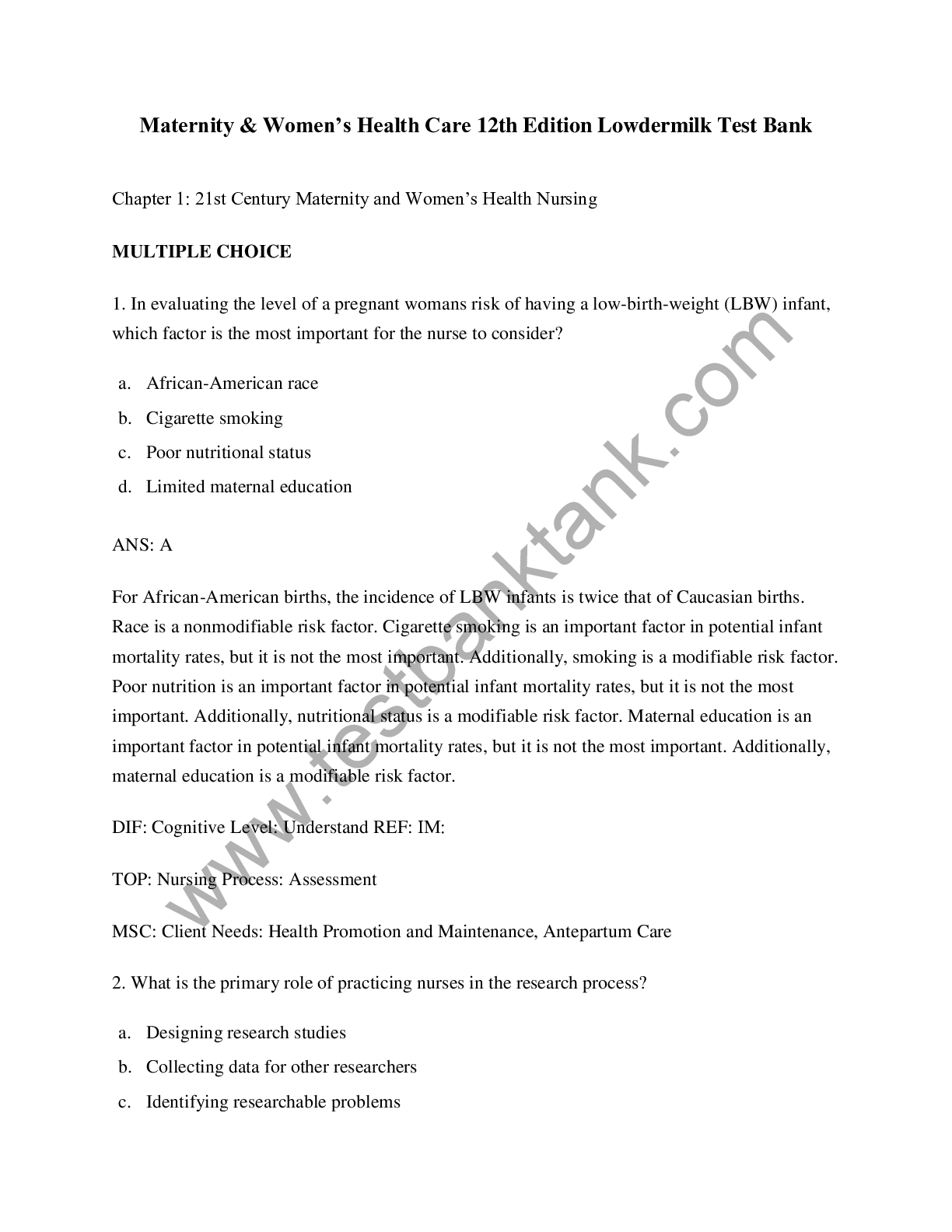
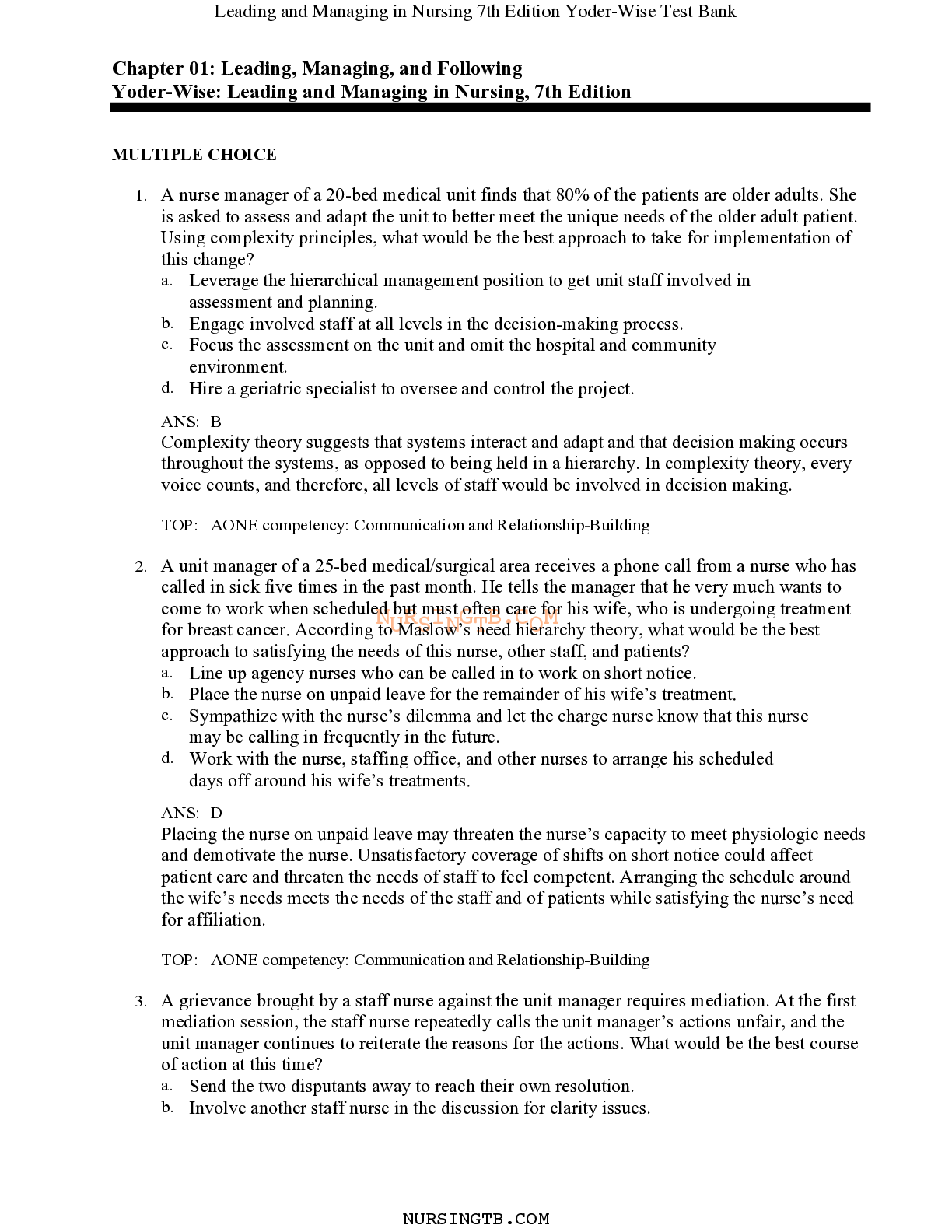

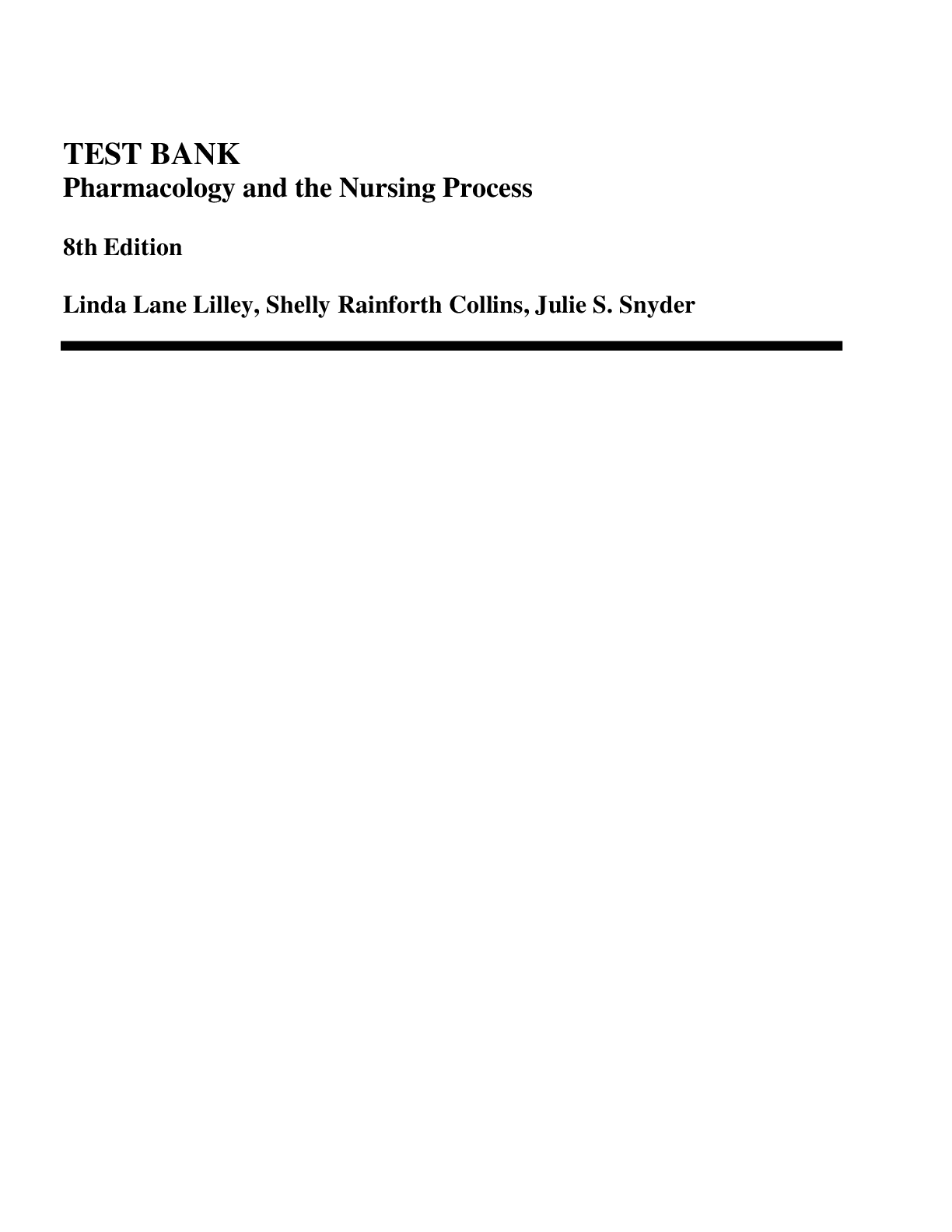



_compressed.png)


